ANAESTHESIA AND CRITICAL CARE PRODUCTS
Our range of products include Adult Breathing Circuit, Anesthesia Face Masks, Disposable Head Positioner, Anaesthesia Filters, Limb O Anesthesia Breathing Circuit and Pressure Infusor Bags.
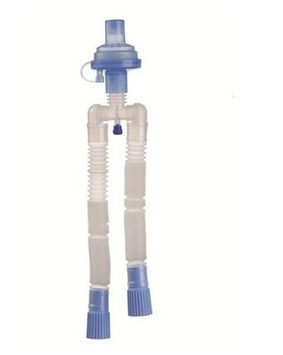
Adult Breathing Circuit
Vital Signs anesthesia breathing circuits are available for the entire range of patients that require anesthesia from neonatal, pediatric, adult and specialty procedures. Vital Signs offers 2 limb products that all have standard ISO fittings. These products come in a wide variety of customized offerings to fit your specific needs and many additional components can be added to the circuit kits.
Benefits:
- Customized to meet your needs.
- Wide range of options in hose lengths, expandable or corrugated.
- Hoses are 100% leak tested.
- Options range from face masks, GAS sampling lines, filters. HME's. ECG pads, suction devices, temperature probes and more.
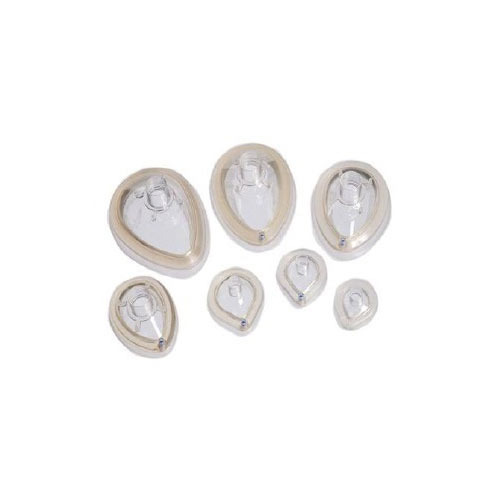
Anesthesia Face Masks
Choose from our 3 distinct lines of anesthesia face masks that offer various styles and features. 30 years ago, Vital Signs produced one of the first single-use, low pressure face mask in anesthesia. Vital Signs still stands for quality and innovation today. All Vital Signs face masks are single-use, allowing for an economical way to reduce the chance of infections. We offer a full range of sizes that accommodate small infants to large adults.
Series F Benefits
Our flexible face mask line features:
- Soft, pliable faceplates
- Teardrop-like shape
- Superior grip and feel
- Optional Bubble Gum scent
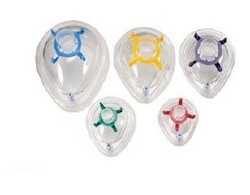
Anesthesia Face Masks
Series C Benefits
Our newest line of face masks features:
- Color-coded prong rings
- Brilliant clarity
- Semi-soft faceplates
- Lightweight design
- Top valves
Additional Information:
- Item Code: Series-C
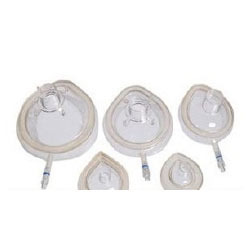
Anesthesia Face Masks
Series A Benefits
Our traditional line features:
- Tail valves for no valve in smaller sizes)
- Rigid dome
- Rounded faceplate
Additional Information:
- Item Code: Series-A
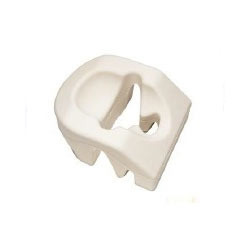
Disposable Head Positioner
Disposa-View is a single-use head positioner that allows you to view, access and support intubated patients in the prone position. While the patient is comfortably positioned in the cradle, you are able to access the tracheal tube and view the patient through the unit openings and mirror. The Disposa-View is lightweight and not made with natural rubber latex.
Benefits:
- Gain clear view and access to face, eyes. and tracheal tube through the slotted mirror design.
- Comfort and support patients head and neck in the contoured cradle.
- Helps control infections and eliminate reprocessing with single-use.
.jpg)
Anaesthesia Filters
Vital Signs offers a blood range of high performance line of passive humidification (1-IME/I-ICH) and fittrotion products for all clinical settings.
Benefits:
- Excellent moisture output reduces the need for active humidificotion.
- Designed for low breathing resistance. reducing the patients work of breathing.
- Transparent housing makes it easy to determine if replacement is necessary.
- wide variety of configurations that can include Memoflex tubing, integrated elbows and gas sampling ports.
.jpg)
Limb O Anesthesia Breathing Circuit
Limb-O is a single tube anesthesia breathing circuit. Unlike coaxial systems, the Limb-0 is a divided tube, utilizing a flexible septum running the length of the tube. There are many advantages to this design, which combines reduced weight per meter and lower compressible volume loss, with o supple feel and drape. Less plastic means less weight and torque on the patients airway management device; Limbo weighs 34 percent less than coaxial circuits and 25 percent less than traditional circle circuits.
Estimates suggest patients can lose up to 15 percent of their heat because of cold, dry anesthetic gases. Limb-O effectively transfers heat from the expiratory to the inspiratory side of the circuit, helping to reduce the patient's energy demands and aiding in their ability to remain non-nothermic.
Limb-O is not mode with natural rubber latex and is made of polyethylene, polypropylene and polyisoprene. The circuits are available in four lengths: 40 in 11.02 m), 58 in (1.47 m), 72 in 11.83 m) and 108 in (2.74 m). Limb-O has been tested with GE Healthcare anesthesia delivery equipment to ensure performance.
Many additional components can be added to the Limb-O circuits to meet your individual needs.
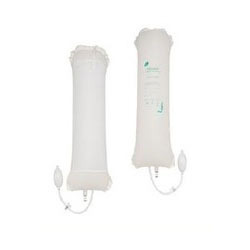
Pressure Infusor Bags
Using only the finest materials, Vital Signs pressure infusors have a long standing reputation for quality and performance that lasts beyond your clinical needs.
Benefits:
- Patient dedicated to minimize the spread of nosocomial infections vo touch contamination.
- Large inflation bulb has rapid recovery for quick and easy inflation.
- Easy to use stopcock and bulb to tube fitted seal prevent leaks.
- High visibility gauge accurately indicates bladder pressure.
- Available in both nylon netting and clear backing to make loading eosy and permits a clear view of fluid level.

Laryngoscope Greenlight Systems
The Greenlight II™ and Vital View™ II provide a wide range of features and benefi ts for laryngoscopy which may enhance clinical application, patient care, and materials management. Both handles are backed by a fi ve year warranty and are compatible with the Safe Sac™ laryngoscope handle cover, which helps to prevent soiling and cross-contamination.
Bright: The LED (Light Emitting Diode) in the Greenlight II and Vital View II is one ofthe brightest light sources on the market. The proximal end of the light rod on each laryngoscope blade is covered to prevent refl ected light, which may interfere with visualization.
Long-Lasting: The LED in both systems lasts approximately 50,000 hours. The effi ciency of the Greenlight II and Vital View II technology extends battery life up to seven times longer than standard incandescent bulb light sources. Also, both systems provide constant light output with battery decline, whereas traditional laryngoscope systems may decrease in illumination over time.
Ergonomic: The over-molded handles of both laryngoscope systems have a durable, slip resistant grip.
Quality of Care: Helps to mitigate the risk of cross-contamination and infection by using Vital Signs single use stainless steel or engineered plastic laryngoscope blades. They provide consistent and optimal illumination. Reusable blades may decrease in light output due to degradation from multiple sterilization cycles.
.jpg)
Fibre Optic Laryngoscope Blades with Fibre Clip
The Most Extensive Range of Fibre Optic Laryngoscope Blades with FibreClip™ Replaceable Light Guide
Features:
- Widest choice of Macintosh and Miller Blades and the
- unique Oxyport paediatric blades
- Incomparable cold, bright light - 2800 LUX
- Simple, trouble-free use. No screws, no lost parts
- Autoclavable FibreClip™ light guide, tested to
- withstand over 500 cycles
- Stainless steel parts guaranteed for 5 years
Truview PCD Video Laryngoscope
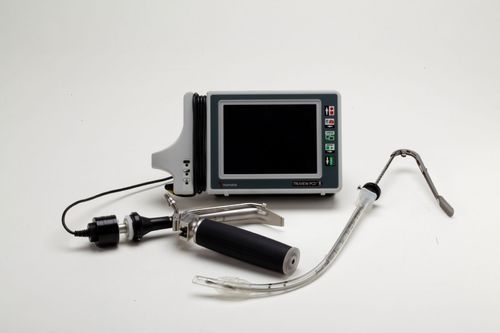
.jpg)
Truview EVO2 and Premier Intubation Trainer Kit
Features:
- Makes difficult cases easier intubate
- Provides full visualization for correct ETT placement
- Indicated in cases involving cervical spine trauma and limited neck extension.
- Reduces patient trauma and sick effects
- Continuous oxygen insufflation elan & window of intubation
- Suitable for teaching and training
- Digitally records laryngeal view
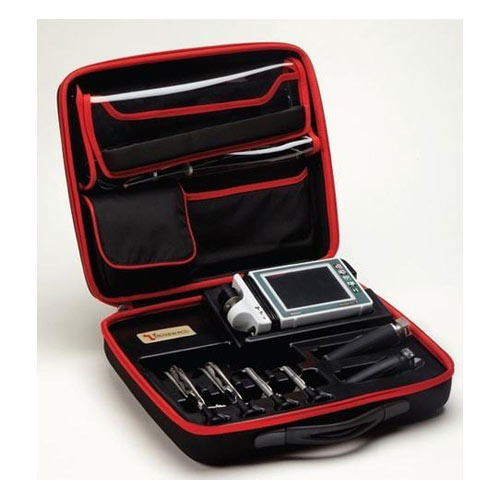
Multichoice Video Laryngoscope System
All the components to build your own Failed DL-Rescue Device at prices you can easily afford.
Product Details:
- Optical blades that can be used independently of camera attachment
- Blade size available for every patient even preemie babies
- Jet oxygen prevents misting and mucous accumulation
- No camera on blade tip to block view
- Standard and Mini sizes designed for use in difficult intubations involving small and difficult mouths
- Brilliant LED illumination
- Easy to charge
- 10 hours of continuous use
- Sony Exview HAD CCD camera
- Easy to use manually adjustable focus ring.
- Magnetic blade linkage allows quick removal when blade is used independently
- TFT Digital LCD picture recording monitor
- 5-inch pocket size
- Stores both stills & video recordings
- Downloads by USB cable directly to computer
- Easy to connect optical blades to most operating room endoscopic systems
- Perfect for training groups
.jpg)
Laryngoscope Systems
Features:
- Gold plated FiberClipTM and black handle for easy identification and to avoid fatal mistakes.
- Modular sets - Numerous options of sets customized according to clients’ needs.
- Competitive price to avoid hospital buying resistance.
- Patented system: Conventional blade with fiber optic guide and Unique inexpensive battery packs.
“Complex airway management (e.g. fiber optic intubation) should be performed in a controlled environment outside of zone IV. Alternative MRI-safe/conditional airway devices should be immediately available in the MRI Suite”
Additional Information:
- Item Code: TRU-MR

Blood and IV Fluid Warming System
Cold and shivering potients are more than just uncomfortable. During the lost two decodes attention has focused on the dangers and costs of hypothermia, core body temperature of less than 36 °C 196.8 °F).
Increased potential for post-operative infections:
"Even mild hypothermia reduces resistance to surgical-wound infection by directly impairing immune function (especially oxidative killing by neutrophils) and decreasing the cutaneous blood flow, which reduces the delivery of oxygen to tissue."'
Increased need for blood transfusions:
"Patients in whom normothermia was maintained during surgery required 86% fewer units of red blood cells, 79% fewer units of plasma and 78% fewer units of platelets than patients in the hypothermic group."
Increased length of stay:
"Hypothermic patients required approximately 40 min longer (94 ± 65 vs. 53
36 min) to reach fitness for discharge, even when return to normothermia was not a criterion (P c 0.001.). Duration of recovery in the two groups differed by approximately 90 min when a core temperature > 36 °C was also required (P < 0.001)."
Increased hospital cost of hypothermia:
"Meta-analytic results allowed us to conclude that hypothermia averaging only 1.5 °C less than normal resulted in cumulative adverse outcomes adding between $2,500 and $ 7,000 per surgical patient to hospitalization costs across o variety of surgical procedures."
